#ahistoryofwar
Text
I’m back, for good. I’m taking requests again, fully. Getting back into giving information to you guys. Hope to speak to you again. <3

11 notes
·
View notes
Photo

"Come To Freddy" - Freddy to Nancy Thompson
Frederick Charles "Freddy" Krueger is a fictional character created by Wes Craven, and is the main antagonist and a killer from the slasher film series A Nightmare on Elm Street. When he was burned to death in 1971 by the citizens of Springwood, he was offered the spot as "Dream Killer" from the demons who live in the depths of hell. He uses this new career of his to his advantage to murder the children of his killers in their dreams. Freddy has also recently won the award of "Best Villain" at the Scream Awards 2010.
Fictional character biography: (Life Story)
Amanda Krueger was a nun working in a hospital, and was raped by over 100 psychopaths. She become pregnant with a son, who was named Freddy. Later in his life he became a murderer in Springwood notorious for killing children. The media labeled him the Springwood Slasher. He was apprehended, but later released because of a technicality. According to the original film, it was because someone didn't sign a search warrant in the appropriate place, but according to the first episode of Freddy's Nightmares, it was because he was not read his Miranda rights. But the parents of the children tracked him down and found him in the boiler room where he took his victims. The parents released flammable gas into the room and set him on fire, which caused his melted-like facial features.
Film series events
In A Nightmare on Elm Street through A Nightmare on Elm Street 5: The Dream Child, Krueger was referred to as an urban legend. The Elm Street parents remained tight-lipped about the events of the decade before, especially now that their children were teenagers. In the closing months of 1981, the children of Springwood, in particular those teens whose parents had formed the mob that killed Krueger, began dying in peculiar ways as they slept. The parents often ignored or denied the pleas of their terrified children, who told tales of a mysterious man named Freddy who was terrorizing them in their dreams.
Krueger met three notable female adversaries in the period before Freddy's Dead: The Final Nightmare:
Nancy Thompson (Heather Langenkamp): Nancy, whose family moved into Krueger’s old home, was the first of the Elm Street children to learn about his past and the first to vanquish him. Nancy returned in A Nightmare on Elm Street 3: Dream Warriors, only to be killed by Freddy, who had taken the physical form of her father as a disguise.
Kristen Parker (Patricia Arquette/Tuesday Knight): Kristen was a girl with the ability to bring people into her dreams. In A Nightmare on Elm Street 3: Dream Warriors, she, along with the last surviving “Elm Street children” battled Freddy in the dream world using self imaginative dream powers. Kristen used her natural gift of pulling others into her dream as a way for the group to battle Freddy at the same time. She was killed by Freddy in A Nightmare on Elm Street 4: The Dream Master by being tossed into his boiler and burnt to death.
Alice Johnson (Lisa Wilcox): Alice gained Kristen's power and the dream powers of her friends to become the Dream Master. In A Nightmare on Elm Street 4: The Dream Master, Alice removed the souls Krueger gained over the years and left him powerless. A year later, Alice became pregnant and Krueger started using the dreams of her unborn child to kill again in A Nightmare on Elm Street 5: The Dream Child. Alice vanquished Freddy a second time with the help of Krueger's mother, Amanda. After Krueger was contained, Alice moved away from Springwood before he escaped and caused the events in Freddy's Dead: The Final Nightmare.
The only male to ever be a main victim of Krueger and main protagonist of any the films, who at the end defeats Krueger, is Jesse Walsh in A Nightmare on Elm Street 2: Freddy's Revenge. Here, Freddy tries to enter the real world through Jesse's body. With the help of his girlfriend, Lisa, Jesse regains control over himself and banishes Freddy back to the dreamworld.
Death:
After a decade of systematically slaughtering all of the children of Springwood in their dreams, the town was shown to be under Freddy’s influence in Freddy's Dead: The Final Nightmare. By absorbing the souls of his victims, Freddy was now powerful enough to blur the lines between dreams and reality. The remaining adults were kept in a mass psychosis after their children had been murdered. When there was no one left to kill, Freddy sought to leave Springwood — hoping to continue his murder spree in another town full of more children. Only one person could arrange for this to happen — his daughter, Kathryn Krueger.
Krueger used what was left of his supernatural powers to find his daughter, who was now an adult named "Maggie Burroughs" (Lisa Zane) and was working as a counselor to troubled teenagers in another city. Since her mother's death, Maggie was raised by adoptive parents and had suppressed the disturbing memories of her early childhood. After catching up with Maggie, Krueger attempted to convince her to do his bidding. She proved, though, that a compulsion for murder was not hereditary and instead schemed with Doc (Yaphet Kotto), her coworker (and dream psychiatrist), to help destroy Krueger. After pulling him out of her dream and into reality, Maggie stabbed Krueger in the abdomen with his own glove and then shoved a pipe bomb into Krueger's chest, effectively killing him and releasing the dream demons that had given him his power.
#ahistoryofcinema#ahistoryofwar#freddy krueger#Horror icons#Horror Movies#a nightmare on elm street#robert englund#demon#serial killer
15 notes
·
View notes
Text
ahistoryofwar is now following you
Hiya!
1 note
·
View note
Note
Thank you, I'm glad you enjoy my content. :)
No problem, always been a huge history buff. Especially when it comes to WWII/military actions
0 notes
Note
Why, thank you. If you have any tips, I'm all ears. And it's no problem. :)
Only concrete rule I follow is to remain truthful.
The rest depends on what you want to do with your blog. Is there a particular aspect of war you want to focus on (the soldier's experience, etc)? Do you want to actively educate people who see your posts? Or do you just want to share images and let people take what they will from them?
One thing I do, because I like this site to be used as a resource, is that I tag as thoroughly as possible. This way people can search tags for certain things, whatever they might be. You might also be able to tell that I seek to educate as much as possible, and I love the interactive experience I get with followers who ask questions or discuss things.
Small note aside from content, I love your theme, but there doesn't seem to be a way to click on individual posts. If you're tagging things, that makes it very difficult to see the tags and then access other posts with the same tags. If I went on a site like yours, I would want to be able to click around more. That's just me though, and my opinion.
Good luck!
1 note
·
View note
Photo
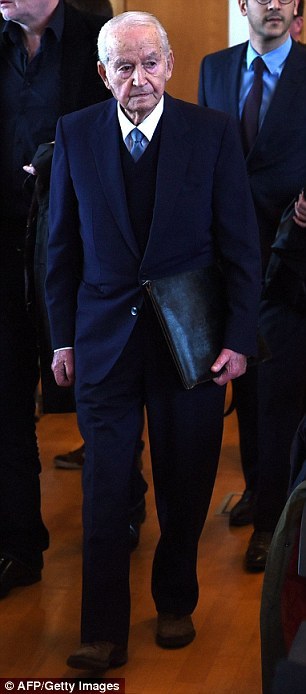
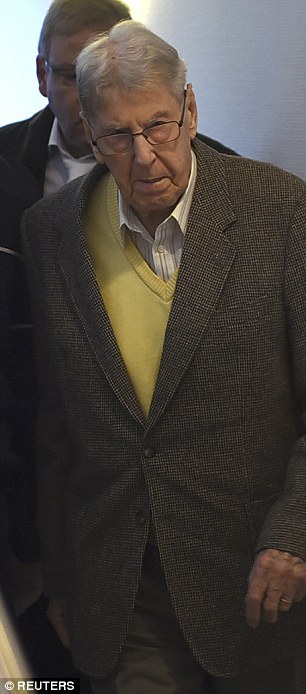
The moment Holocaust survivor comes face to face in court with Nazi death camp guard, 94, accused of helping to murder 170,000 Jews at Auschwitz.
Reinhold Hanning, 94, is accused of 170,000 counts of accessory to murder
He was SS 'sergeant' at time when hundreds of thousands were killed there
Survivor Leon Schwarzbaum looks him in eye and tells him to 'come clean'
He is among 40 survivors and relatives who will testify during the trial
A 94-year-old former Auschwitz guard came face-to-face with Holocaust survivors today when he arrived at court to stand trial for helping to murder 170,000 Jews.
Reinhold Hanning is accused of serving as an SS Sergeant between 1943 and 1944, a time when hundreds of thousands of Hungarian Jews were gassed to death at the camp.
The trial in Detmold was moved to the city's chamber of industry and commerce because there are not enough seats for media and public in the actual courthouse.
Read more: http://www.dailymail.co.uk/news/article-3442010/Arriving-face-justice-70-years-Nazi-death-camp-guard-94-goes-trial.html#ixzz3zyIlh000
12 notes
·
View notes
Photo
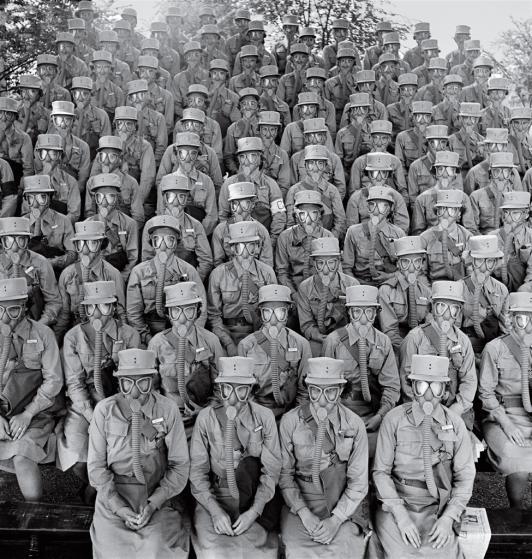
Members of the Women's Auxiliary Army Corps, commonly known as WAACs, don their first gas masks at Fort Des Moines, Iowa, in June 1942. The female troops were famously praised by General Douglas MacArthur, who called them "my best soldiers."
79 notes
·
View notes
Photo

In a picture that captures the violence and sheer destruction inherent in war perhaps more graphically than any other ever published in LIFE, Marines take cover on an Iwo Jima hillside amid the burned-out remains of banyan jungle, as a Japanese bunker is obliterated in March 1945.
72 notes
·
View notes
Photo
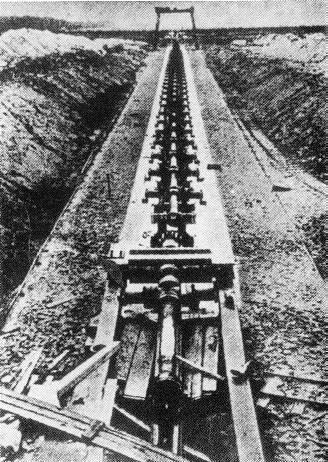
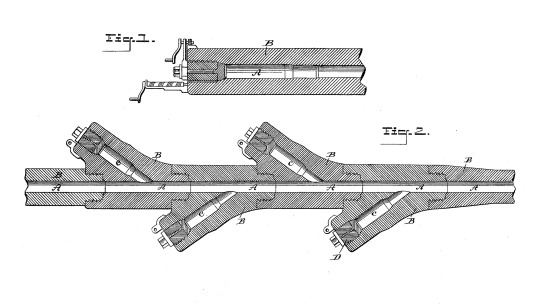
The V3 was the natural development from the V1 and V2 weapons that had terrorized London in 1944 – a weapon for revenge (‘Vergeltungswaffen’). The V3 was never fired at London though it was used in a very minor way in the Battle of the Bulge.
On July 6th, 1944, nineteen RAF Lancaster bombers from 617 Squadron (the ‘Dambusters’ Squadron) carpet-bombed a hillside on the French northern coastline between Calais and Boulogne. To all intents their target appeared to be a railway tunnel. In fact, inside the hill itself was an emplacement that would have fired the V3 if the chance had been there for it to do so – part of the firing mechanism is in the photo above.
However, the Lancasters attacked the hill with 35 tons of high explosive bombs. Their target were the concrete and steel-lined covers of the massive gun barrels that were meant to attack London with the intention of reducing the inner city to rubble. The V3 was not a rocket like to V2 nor a pilot-less plane like the V1. It was a dart-shaped shell nine feet long and the 416 feet gun barrels targeted by the Lancasters were, on paper, capable of firing 600 of these shells every hour. However, one of the ‘Tallboy’ bombs (12,000 lbs of explosives) developed by Dr Barnes Wallis penetrated one of the five gun barrel shafts and did so much damage to the ‘guts’ of the project that it was eventually abandoned.
The idea of a weapon that could destroy London was sold to Hitler by the firm Roechling – a leading German armaments and steel firm. Because it had the backing of Hitler, great sums of money and manpower was thrown into the project. Men such as Werner von Braun claimed that the money was better spent on upgrading Peenemunde but Hitler had got his mind set on the destruction of London – something the Luftwaffe had failed to do during the Blitz.
Project ‘High Pressure Pump’ was started in August 1942. The man at the head of the project was August Coenders, a machine gun engineer. He had studied captured French documents from 1918 for a multi-stage long barreled gun that was meant to be the French answer the the Germans ‘Big Bertha’ long range gun that had fired 320 eight-inch shells into Paris from the distance of 78 miles. Coenders boss, Hermann Roechling, was a personel friend of Hitler and he saw this as a chance to greatly elevate himself in the eyes of the Führer. By 1943, Albert Speer was also willing to add his name to the project.
Speer’s plan was to build 50 of these huge guns set in giant underground emplacements near the hamlet of Mimoyecques in the Pays de Calais. The guns were designed to fire one round from each barrel every five minutes which, Speer hoped, would produce a “saturation coverage” of London with a maximum of 600 shells hitting London every hour.
Ballistic experts in Nazi Germany doubted whether the plan had any reality. Lieutenant-General Erich Schneider believed in the development of the V1 and V2 but he always believed that the V3 was in the realms of fantasy. In this he was probably correct. The initial tests on the shells showed that when they were fired they had a tendency to flip over in flight as they lack stability. Therefore, from the earliest tests, London appeared to be safe. However, this did not stop Speer pushing for Hitler to continue his support the project.
The huge emplacement was built at Mimoyecques using slave labourers, POW’s and German workers. Such activity obviously attracted the attention of the French Resistance who fed intelligence back to London. 1000 artillery troops were quartered underground; the complex had its own power station that powered an air conditioning unit. Speer got it into his head that the V3 was to be the weapon that would bring Britain to its knees and vast sums of money was thrown at the project, so much so that it is said that the campaign in Russia was affected by this. It became the weapon that had overriding priority within Germany.
RAF photo reconnaissance planes also spotted a tell-tale sign – haystacks out in the autumn when all others had been brought in within the region of the Pay de Calais. These haystacks disguised the gun barrel covers of the V3 project. In November 1943, the RAF made its first attack on the complex but it made little impact.
In January 1944, the guns that were to be used on the V3 project were fired for the first time in Germany at a test range. The velocity of firing was only 1000 metres a second – 50% too weak for a shell to hit London from Mimoyecques. As important, the shells that were fired were well below the size expected for an all-out attack on London:
“The explosive charge they could carry was so small that they were quite useless against a huge target like London; what we needed was an atom warhead but Hitler would not see that.” - Lieutenant-General Erich Schneider.
However, the expert opinions of the likes of Schneider were ignored and he had to tread carefully in an era when “defeatism” was punishable by a term in a concentration camp and possible death.
Those who were concerned that the V3 was absorbing far too much money, time and manpower. They called in Professor Werner Osenberg, head of the German Wartime Scientific Research Council. He quickly realized the the ‘High Pressure Pump’ project was fraught with scientific problems that probably could not be solved. Osenberg complained that the V3 project was not based on any form of scientific thinking and he referred to it as “messing about”. Roechling complained to Hitler about such comments but this became irrelevant when in June 1944, the Allies landed in Normandy. Movement up the coast to the Pays de Calais would not take long and the project was doomed to failure.
Perhaps the most pertinent comment about the whole project came from an engineer who worked on ‘High Pressure Pump’, Anton Huber:
“The actual project itself seems not to be scientifically perfect, and its development has not been sufficiently long. The workers are wasting a lot of time on the site because there are not enough trained concrete makers.”
On July 4th 1944, Huber wrote to Osenberg that the complex had been without electricity for seven days and that nothing had been achieved. On July 8th, Huber wrote that the project had effectively been wiped out as a result of the Lancaster bombers raid. However, Hitler, still convinced that the V3 would win the war for him, ordered that the project should be moved to Germany itself and placed under the control of the SS. Hitler saw it as the secret weapon that would push back the Allies as they tried to advance to Germany.
One barrel was used with just 44 rounds in the Battle of the Bulge. The very last V3 shells fell on Luxemburg. After this, the barrel was destroyed. The final order to end the V3 project came in February 1945.
Source: http://www.historylearningsite.co.uk/world-war-two/world-war-two-in-western-europe/the-v-revenge-weapons/v3/
12 notes
·
View notes
Photo

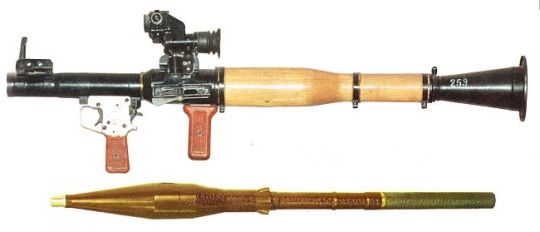
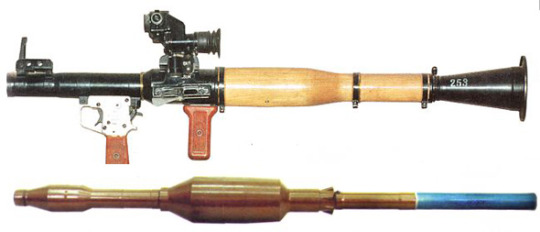
Caliber: 40 mm launcher; 40 and 70 - 105mm warheads (depending on the grenade model).
Type: recoilless launch + rocket booster.
Overall length: 650mm.
Weight: 6.3 kg unloaded, with PGO-7 telescope sight.
Effective range: 200-500 meters, depending on the grenade type.
The RPG-7 is a further development of the previous RPG-2 antitank grenadelauncher. RPG-7, in its first version, known as RPG-7V, has been adopted by Soviet army in 1961, and still is widely fielded in Russia and at least 50 more countries. By far, RPG-7 can be considered as one of the most successful antitank grenade launchers ever made. Initially thought as an anti-armor weapon, it latter has been adopted for other fire-support missions by introduction of various types of grenades, such as anti-infantry HE-FRAG, multi-purpose Thermobaric/FAE, and some other types of ammunition. The antitank grenades for RPG-7 also came a long way, from original PG-7V grenade, with penetration of about 260mm/10inches of RHA, and up to 500mm/20inches of RHAor 1.5 meters/5ft of brick wall with single-warhead PG-7VL grenade, developed in 1977. By the late 1980s, a tandem-type PG-7VR grenade has been introduced. This grenade has two warheads and is intended against the most modern tanks, fitted with ERA (Explosive Reactive Armor). Front warhead sets off the ERA, and second warhead then penetrates more than 600mm/24in of armor.
The RPG-7 is a shoulder fired, single-shot, smoothbore recoilless launcher. Grenades are loaded from the front, and the rear of the barrel is fitted with venturi nozzle. Because of the recoilless design, there is a dangerous backblast zone, more than 20 meters/60ft long. The antitank grenades are of combination type, using a charge of smokeless powder for RCL-type launch. Once grenade reaches safe distance from the shooter (about 10-20 meters), the built-in rocket booster engine ignites and further accelerates the grenade, greatly enhancing the effective range (up to 500+ meters for single warhead grenades, up to200+ meters for much heavier tandem or FAE grenades). Because of increase in range, RPG-7 is usually issued with 2.7X fixed magnification optical sight, designated PGO-7. The sight has a range-finding scale for typical targets (tanks) with height of 2.7m/9ft, and windage adjustment scales. RPG-7 also fitted with backup iron sights. RPG-7 uses mechanical ignition system with manually cocked external hammer, and a single-action trigger. Because of this, grenade must be properly aligned with the firing mechanism upon loading.
Each AT grenade consists of a large-caliber HEAT warhead with base fuze, with the 40mm diameter rocket engine behind. The rocket nozzles are located at the front of the engine, close to the warhead. The tail of the rocket is fitted with folding stabiliztator fins, which are extended when grenade leaves the barrel. The launch charge, made of black powder, is loaded into a combustible cardboard case, and attached to the rear of the grenade prior to loading into launcher. Grenades and launch charges are carried in special backpacks. By the original soviet standards, grenadier carries two rounds, and his assistant carries three more. There were several minor upgrades to the basic design of the RPG-7 in USSR and Russia, the most important being the RPG-7D, with two-part takedown barrel, which was issued to the airborne troops. Since RPG-7 was, and still is manufactured in many countries(such as Bulgaria, China, Iraq and Romania, to name a few), there are plenty of modifications in launcher, and, more important, in grenades.
RPG-7 is a simple and inexpensive weapon, yet it possess a high threat to most modern tanks, and also can serve in a number of other roles, making it a true one-man artillery.
19 notes
·
View notes
Photo
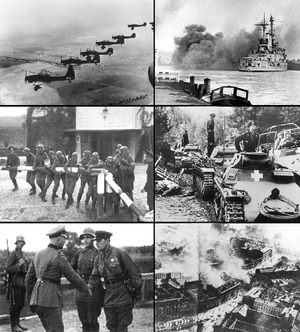
From left to right: Luftwaffe preparing to bomb Wieluń,SMS Schleswig-Holstein attacking the port of Danzig,Wehrmacht soldiers destroying the Polish-German border post, German tank and armored car formation, German and Soviet troops shaking hands following the invasion, Bombing of Warsaw.
7 notes
·
View notes
Text
Back!
I’ve missed taking requests, so send them in and I’ll be sure to present a post for you.
I’m back!
3 notes
·
View notes
Photo
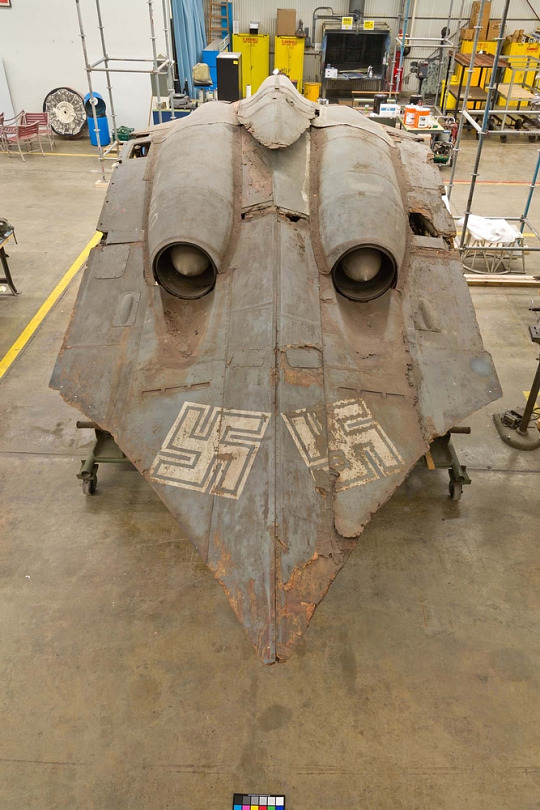


Horten Ho 229:
In 1943 the all-wing and jet-propelled Horten Ho 229 ('aitch-oh-two-two-nine') promised spectacular performance and the German air force (Luftwaffe) chief, Hermann Göring, allocated half-a-million Reich Marks to the brothers Reimar and Walter Horten to build and fly several prototypes. Numerous technical problems beset this unique design and the only powered example crashed after several test flights but the airplane remains one of the most unusual combat aircraft tested during World War II.
306 notes
·
View notes
Photo

The automobile engineer Ferdinand Porsche (in suit), Adolf Hitler and, immediately to Hitler's left, the head of the German Labour Front, Robert Ley, admire Hitler's birthday gift on his 50th birthday: a convertible Volkswagen.
#ahistoryofwar#ferdinand porsche#Adolf Hitler#robert lev#convertible#automobile#porsche#birthday#World War Two#nazi germany
62 notes
·
View notes
Photo

Liverpool remembers.
R.I.P to those whom died on September 11th 2001. Gone but not forgotten.
37 notes
·
View notes
Photo
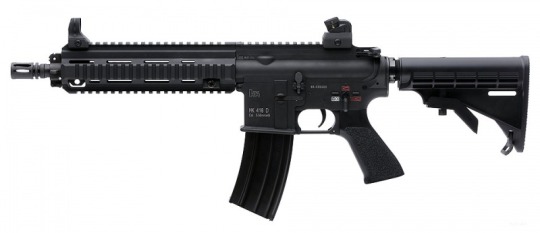
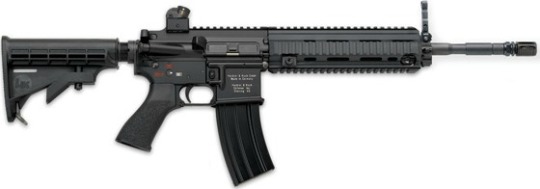
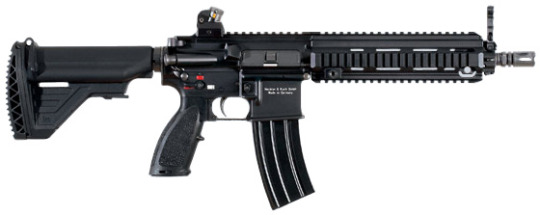
Heckler & Koch HK416:
Following the revision of the OICWBlock 1 / XM8 program, the Heckler & Koch company decided to enter the US military and law enforcement markets with the alternative design, which, in fact, looks quite promising. Based on the experience, gained during successful upgrade program of the British SA80 / L85A1 program, HK decided to cure the existing M16 rifles and M4 carbines from most of their problems, inherent to this 40-years old design.The key improvements, made by HK, are their patented short-stroke gas piston system, borrowed from HK G36 rifle. This system replaced the direct gas system of standard M16 rifle, so no powder residue will remain in the receiver even after long shooting sessions. The "new"gas system also is self-regulating and will work reliably with any barrel length. Other improvements include new buffer assembly, improved bolt, and a cold hammer forged barrel, as well as free-floating hand guard with integral Picatinny-type rails. Originally developed as a "drop-in" upper receiver assembly for any standard M16/M4 type lower receiver, HK416 is also available as a complete weapon, with HK-made lower receivers. Current (late 2005) models include carbines with 10.5" and14.5" barrels, and 16.5" barrelled carbine and 20" barrelled rifle will be added later. 7
Another interesting development, which is apparently based on the up scaled HK416 design, is the HK417 - the 7.62x51 NATO rifle that combines AR-15/M16 type ergonomics, layout and handling with improved reliability of HK-made and designed gas piston system. This rifle probably will use HK G3-type magazines. If the rumours about HK417 are true, the 5.56mm HK416 / 7.62mm HK417 combination will be a direct rival to the newest FN SCAR system.
HK416 is a gas operated, selective fired weapon of modular design. It uses short-stroke gas piston that operates the 7-lug rotating bolt. Receiver is made from high grade aluminium alloy. Combination-type safety / fire selector allows for single shots and full automatic mode. Hk416 retains all M16-style controls, including last round bolt hold-open device, rear-based charging handle and magazine release button on the right side of the magazine well. HK416 is fitted with four Picatinny rails as standard, and may accept any type of sighting devices on STANAG-1913 compliant mounts. It also can accept modified HK AG36/AG-C 40mm grenade launcher, which is clamped directly to bottom rail. Butt-stock is of typical M4 design, multi-position telescoped.
160 notes
·
View notes